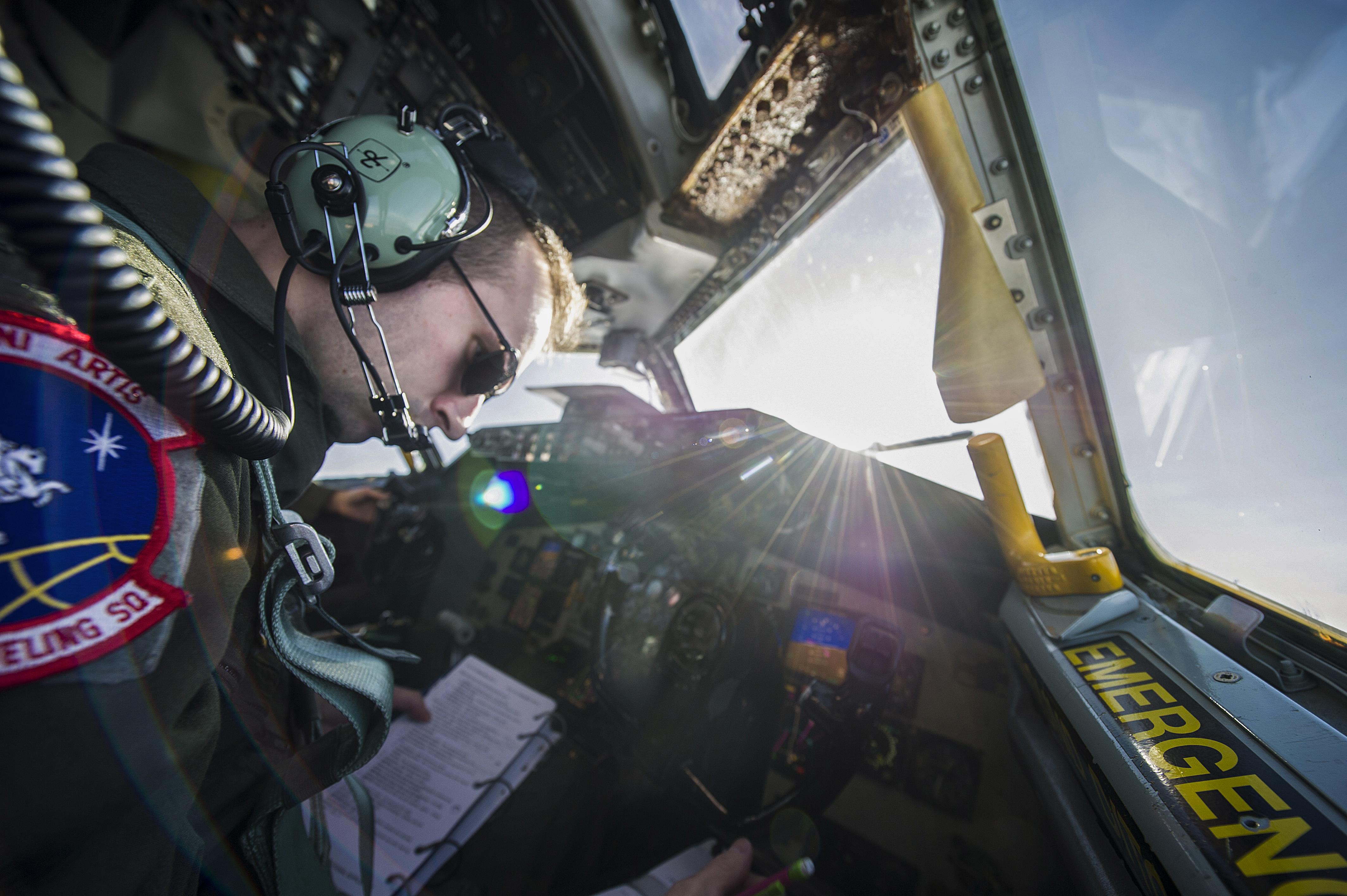| Online: | |
| Visits: | |
| Stories: |

| Story Views | |
| Now: | |
| Last Hour: | |
| Last 24 Hours: | |
| Total: | |
Face of Defense: Airman Recounts Struggles on Path to Pilot Dream
Tuesday, December 1, 2015 14:05
% of readers think this story is Fact. Add your two cents.
By Air Force Airman 1st Class Sean Campbell 92nd Air Refueling Wing
FAIRCHILD AIR FORCE BASE, Wash., December 1, 2015 — “I went from thinking I was the tip-top to struggling to make it through.”
That's how Air Force 1st Lt. Steven G. Strickland, 93rd Air Refueling Squadron co-pilot, remembers his experience in pilot training. “But because I struggled, I was able to learn more and I became more grateful for the opportunity to be a pilot,” he said.
Strickland said he knew from a very young age that being a pilot was something he wanted to achieve. Growing up on Air Force bases, Strickland saw planes flying frequently and attended many airshows, which he said, instilled in him the dream of being a pilot.
During his high school years, Strickland lived in Colorado Springs, Colo. The Air Force Academy was not far from the high school he attended, and he said recruiters visited frequently.
“The recruiters would tell us all these cool things about the Air Force,” Strickland said. “Already wanting to be an Air Force pilot, the recruiters made the Air Force Academy seem like the best route to take.”
'Pilot Training Doesn't Wait for Anybody'
Strickland applied to the AFA and was accepted into the class of 2011. Before completing his four years, he took a two-year sabbatical to conduct a mission in Paraguay for his church. After two years he returned to the Academy and graduated with the class of 2013.
Strickland arrived at Columbus AFB, Miss., in August of 2013. The first step after arriving at Columbus AFB was to begin Initial Flight Screening, a process that helps determine if someone can learn quickly enough to progress through pilot training.
“Unfortunately pilot training doesn't wait for anybody. You don't go at your own pace,” Strickland said. “There is a specific curriculum, a specific syllabus that you have to complete by a certain amount of time.”
After IFS the instructors begin to teach basic airmanship including flying, taking off, landings and basic aerobatics. Students then learn how to fly with instruments, in different weather situations and in formation.
Strickland said learning how to land was a struggle for him. He said that changed when one of his instructors told him to look down to the end of the runway and picture himself floating down.
“For some reason the way he explained it clicked, and I was able to land from that point on without any issues,” he said.
A Heavy Choice
The pilots eventually have to decide whether to go on the fighter pilot track or the “heavy” track, which includes larger cargo and transport planes.
“I was not a huge fan of being in the plane myself,” Strickland said. “I like the concept of being with a crew and having someone to back you up. So I chose to go the T-1 Jayhawk route, which is the heavy trainer.”
Strickland said he found his interest in air refueling during the last phase of pilot training — mobility fundamentals. Many of Strickland's instructor pilots were former KC-135 Stratotanker pilots. He said they inspired him to become a tanker pilot with their stories about the different aspects of flying the KC-135 and the tanker lifestyle.
Before leaving training, pilots are given a list of the planes that are available, and the students rank them by what they want to fly.
“The KC-135 was the second plane on my list and Fairchild Air Force Base was the first location I wanted for the KC-135, so I was pretty pumped,” he added.
Last Stages of Training
Following graduation from pilot school, Strickland went to Fairchild AFB to complete Survival, Evasion, Resistance and Escape school. Out of the comfort of everyday living, he said he soon realized how real SERE situations could be, and that led Strickland to learn things about himself.
“SERE really teaches you to be resilient and to trust in everything the United States and the Air Force stands for,” he said.
After SERE training, Strickland went to Altus AFB, Okla. where he completed a five-month course to get acquainted with the KC-135. “While at Altus, they kind of bring you into the brotherhood of tanker pilots, and it's really cool,” he said. “When I graduated the academy, I thought 'I'm going to be a pilot. I'm pretty much already a pilot.' I was super prideful.
“Going through training was a humbling experience because you recognize that you're not good at flying,” he said. “There were moments were I thought I was going to wash out.”
Because of that sense, he said, Strickland studied more and learned more than he otherwise would have.
“Everyone struggles at some point when initially learning how to fly, but Lieutenant Strickland has an amazing attitude and work ethic that ultimately saw him through,” said Air Force Lt. Col. George Vogel, 93rd ARS commander. “What he probably didn't tell you is that he received an 'Exceptionally Qualified' rating on his instrument/qualification check ride at the KC-135 schoolhouse. That rating is the highest one possible and is reserved for the top 5 percent of aviators. The 93d Air Refueling Squadron family could not be more proud of him.”
Source: http://military-online.blogspot.com/2015/12/face-of-defense-airman-recounts.html




